If you enjoy our semi-regular series on Singapore walks, EL contributor CERI POWELL is back with another one! Here, she outlines an easy urban walk that takes in the temples and historical sites around Telok Ayer, crossing Ann Siang Hill to the edge of Chinatown.
About this Singapore walk
The 2.5km route starts at Telok Ayer MRT Station (Downtown Line) and finishes at Maxwell MRT Station (Thomson-East Coast Line). It should take approximately 75 minutes, including time for photos and to soak in the atmosphere! See the end of the article for opening hours of religious sites and restaurants.
Location #1: Fuk Tak Chi Museum
As you leave Telok Ayer MRT, take Exit B onto Telok Ayer Street. In this beautiful area of traditional three-storey shophouses and historical clan clubs, the first stop is reached by crossing the street for a peek at the Fuk Tak Chi Museum, in the lobby of the Amoy Hotel. Step over the traditional threshold, designed to stop evil spirits travelling along the ground from entering. Youre now in an early shrine erected by the first Cantonese and Hakka arrivals to Singapore. (Tip: Show respect by not stepping on the top of the threshold.)

Location #2: Nagora Durgha shrine
Continuing along Telok Ayer Street, you’ll see the Nagora Durgha shrine. Built in 1828 by southern Indian Chulias (Muslims from the Coromandel Coast), and dedicated to a Sufi saint named Shahul Hamid, it features two 14-storey minarets and onion domes, which tower above the small yet delightful Telok Ayer Park.

Many architectural styles were included in the construction, such as large French-style windows with semi-circular fanlights on the wall facing Boon Tat Street, ensuring that the interior stayed well ventilated and cool. As this is a shrine rather than a mosque, it doesn’t face Mecca. Instead, it’s aligned with the street orientation.
Location #3: Telok Ayer Park
Telok Ayer Park echoes with the relief that the seafarers from many nations must have felt on reaching dry land in Singapore. Wander through and imagine the sandy beach here when Telok Ayer Street marked the edge of the sea. Bronze statues of early settlers celebrating and toiling under the sun elaborate on the waterfront history of this road.

Location #4: Thian Hock Keng Temple
Just a few steps further, enter the stunning Thian Hock Keng Temple. Constructed in the 1830s, it was dedicated to Ma Zu, the goddess of seafarers, by the Hokkien arrivals. The temple is free to enter. The elaborate curved roof with its “swallowtail” ridges is pure Hokkien, as are the four dancing dragons symbolising justice and power. However, the Indian figures that can be seen holding up the roof – a nod to the Tamil Muslim builders of the temple – are unique.

Unusual features abound here. For instance, there are Dutch Delft porcelain tiles in the entranceway and cast iron railings from Glasgow. (The Scots had a bit of a monopoly on iron railings in 1800’s Singapore!) However, try to find a single nail and you’ll have no luck. There are said to be none in the entire construction! In 1907, the temple received the highest imperial favour, a calligraphy plaque by the Qing Emperor Guang Xu (now in the National Museum) with a message proclaiming “gentle waves on the southern seas”.
The places of worship continue, although the Al-Abrar Mosque (192 Telok Ayer Street) is easy to miss as the five-foot way runs straight across the entrance. It’s built in such a simple style that it was affectionately known as the “Hut Mosque” by its Tamil-speaking worshippers.
Location #5: Ann Siang Hill
To continue your Singapore walk, turn right onto Amoy Street once you’re at the end of Telok Ayer Street. Approach the tiny temple on the corner and a covered walkway ahead. Amoy Street was renowned for its opium dens, seedy establishments where the early coolies went to imbibe and escape their harsh lives in Singapore. The steps mark the entrance to Ann Siang Hill, the only small hill remaining of the original three in this area. The other two were levelled and their soil used when the Telok Ayer water bay was reclaimed to accommodate the massive increase in shipping trade through Singapore after the opening of the Suez Canal.
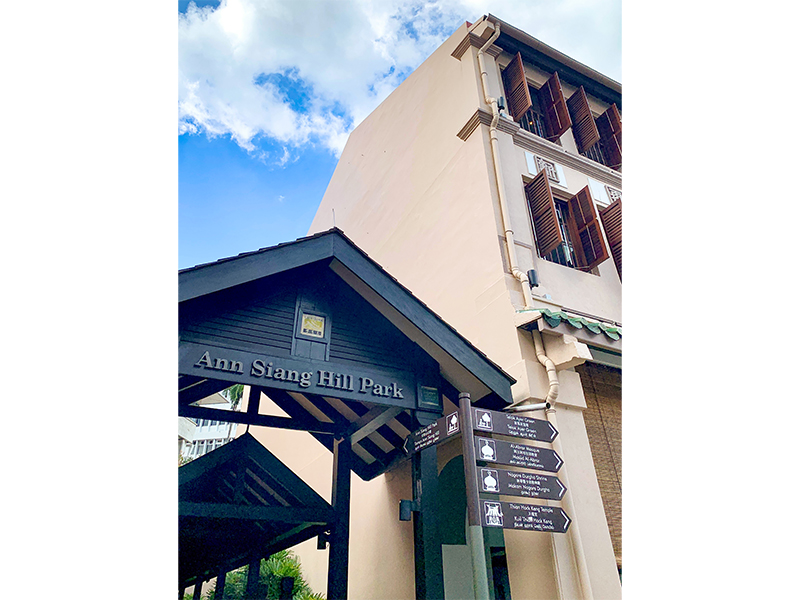
On this hill in the early days of settlement there were nutmeg and clove plantations. It belonged for a time to John Gemmill, an auctioneer who is remembered for having donated Singapore’s earliest public water fountain, in 1864, providing fresh, clean water for all. His “lion’s head” fountain can be found today in the grounds of the National Museum. It still dispenses clean water to hot and thirsty tourists! Once the ownership of the area passed to wealthy landowner Chia Ann Siang in 1894, the age of elegant Chinese shophouses and clan meeting places began. Walk up the steps, along the brick paved walkway, then up the spiral wooden steps to the top.
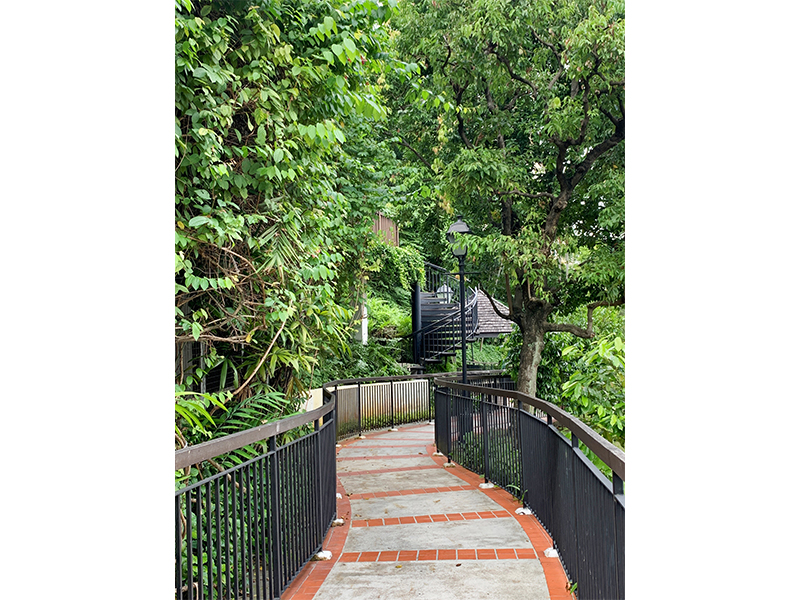
Passing the PS.Café on your right, walk down a few steps to enter Ann Siang Road. Pause to read about the Ning Yeung Wui Kuan, the oldest Chinese clan association in Singapore for settlers from Guangdong. Chinese clans provided these early workers with familiar customs, food and critical financial support.
Location #6: Old and new hotels
Next, walk towards Erskine Street through the shady porches of the shophouses that are now home to two hotels: Ann Siang House and the Scarlet Hotel. The modern boutique-style rooms here are a far cry from the overcrowded dormitories for rickshaw pullers in the past. Some of the doors of these dorms would be removed so coachmen could sleep with their horses close by to be immediately “on call”.
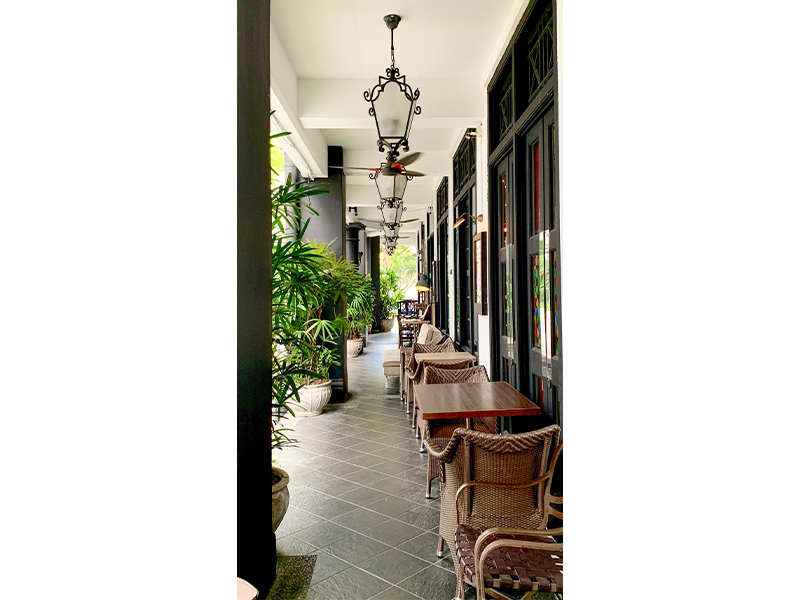
Location #7: Maxwell Food Centre
Time for a break! Walk down the steps to the famous Maxwell Food Centre, one of the largest in Singapore. Local tastes on offer here range from oyster cake to iconic chicken rice and vegan options.
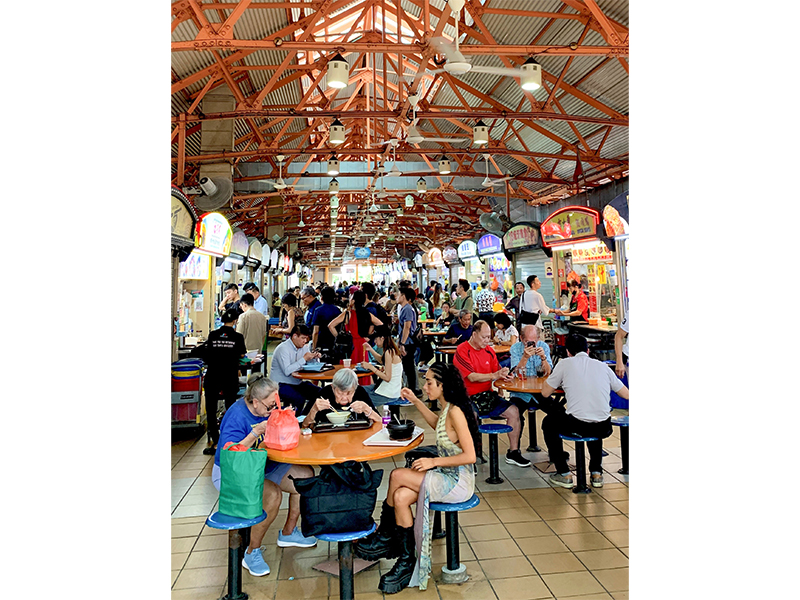
Location #8: Buddha Tooth Relic Temple
Take the South Bridge Road exit from Maxwell Food Centre. Directly ahead is the impressive Buddha Tooth Relic Temple. Surprisingly, this was completed only in 2007 under the guidance of the Venerable Shi Fa Zhao, who prepared the temple design during 365 days of seclusion in a Dharma Lotus Blossom Retreat. Inside the stunning multi-floor temple is the centrepiece: a gold casket weighing 320kg. The casket houses the Buddha Tooth relic. Other highlights of the building are the Buddhas of the World Museum and the Hall of Hundred Dragons. The latter has hundreds of golden buddha statues adorning the walls. (Please dress respectfully here.)
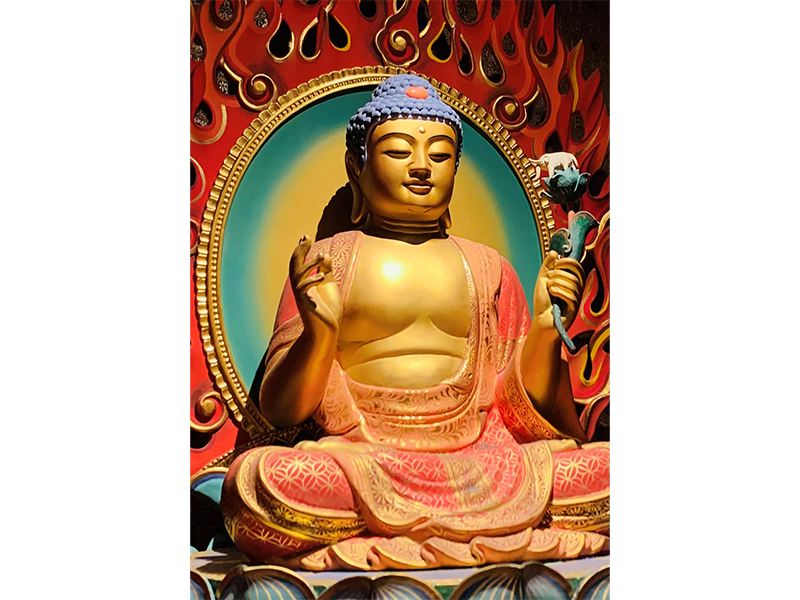
Do make the effort to climb the narrow stairs from the top floor to the serene rooftop garden housing prayer-wheels and a lovely orchid collection. Another eating option – especially for vegetarians – is the basement Lian Xin Vegetarian Restaurant. Access it from steps off Sago Street at the side of the temple. Simple dishes are available at very cheap prices here.
Location #9: Further afield
Maxwell MRT Station immediately opposite marks the end of the walk. Keen for more exploring? This is the edge of Chinatown, with narrow Sago, Smith, Temple and Pagoda Streets full of souvenir shops and Chinese eateries. Don’t miss the amazing street murals of Mr Yip Yew Chong adorning the buildings and depicting lively historical scenes.
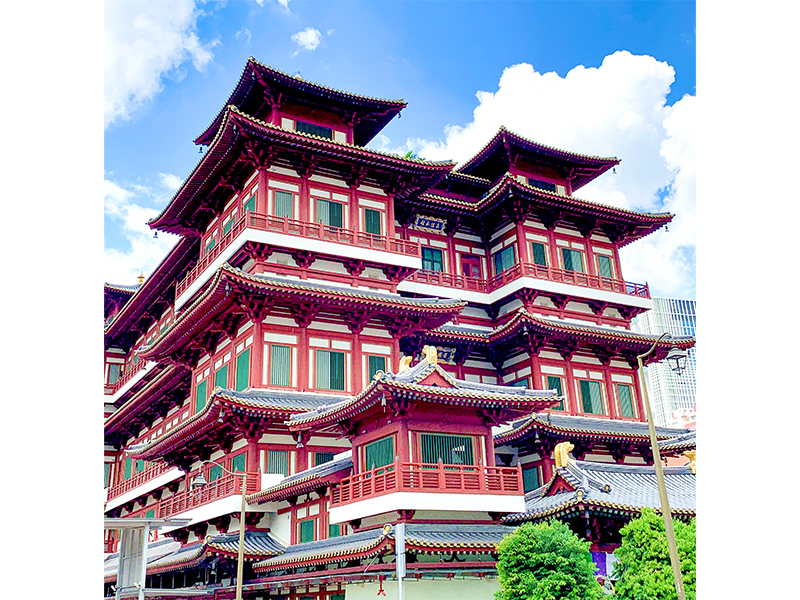
Opening Hours
- Nagora Durgha Shrine: Monday to Friday, 10am to 5pm; Saturday, 9am to 1pm
- Thian Hock Keng Temple: Daily, 7.30am to 5.30pm
- Maxwell Food Court: Daily, 8am-2am
- Buddha Tooth Relic Temple: Daily, 7am to 5pm
- Lian Xin Vegetarian Restaurant: Daily, 9am to 2.30pm
Check hours online too, as festivals can impact these timings.
For more information on the Thian Hock Keng Temple, visit chinatown.sg/visit/thian-hock-keng-temple. For the Buddha Tooth Relic Temple, head to buddhatoothrelictemple.org.sg.
This Singapore walk through Telok Ayer and Chinatown first appeared in the February 2024 edition of Expat Living. You can purchase the latest issue or subscribe, so you never miss a copy!
Also, to make the most of living in Singapore, read our latest City Guide here for free!





